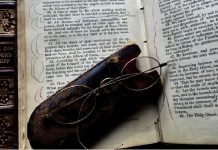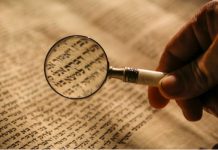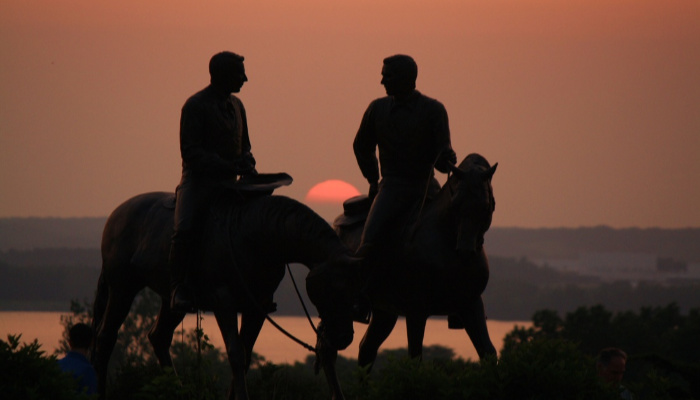
On June 10, 1844, Joseph Smith, who was the mayor of Nauvoo, and the Nauvoo city council ordered the destruction of the Nauvoo Expositor and the press on which it was printed. The Nauvoo Expositor was an anti-Mormon newspaper that slandered the Prophet and other Saints and called for the repeal of the Nauvoo Charter. City officials feared that this publication would lead to mob action. As a result of the action by the mayor and city council, Illinois authorities brought an unfounded charge of riot against the Prophet, his brother Hyrum, and other Nauvoo city officials. The governor of Illinois, Thomas Ford, ordered the men to stand trial in Carthage, Illinois, the county seat, and promised them protection. Joseph knew that if he went to Carthage, his life would be in great danger from the mobs who were threatening him.
Believing that the mobs wanted only them, Joseph and Hyrum decided to leave for the West to preserve their lives. On June 23, they crossed the Mississippi River, but later that day, brethren from Nauvoo found the Prophet and told him that troops would invade the city if he did not surrender to the authorities in Carthage. This the Prophet agreed to do, hoping to appease both government officials and the mobs. On June 24, Joseph and Hyrum Smith bade farewell to their families and rode with other Nauvoo city officials toward Carthage, voluntarily surrendering themselves to county officials in Carthage the next day. After the brothers had been released on bail for the initial charge, they were falsely charged with treason against the state of Illinois, arrested, and imprisoned in Carthage Jail to await a hearing. Elders John Taylor and Willard Richards, the only members of the Twelve who were not then serving missions, voluntarily joined them.
On June 27, 1844,…Shortly after five o’clock in the afternoon, a large group of attackers stormed the jail, firing their guns at the men inside. …Hyrum Smith was shot first and died almost immediately. Elder Richards miraculously received only a superficial wound; and Elder Taylor, though severely wounded, survived and later became the third President of the Church. The Prophet Joseph ran to the window and was fatally shot. The Prophet of the Restoration and his brother Hyrum had sealed their testimonies with their blood (Teachings of the Presidents of the Church: Joseph Smith).
Joseph Smith was jailed ostensibly because of the destruction of the printing press. In fact, people gave many reasons why Joseph Smith should be imprisoned, and many reasons why he should be killed. But none of the reasons people give for motivating his imprisonments and murder hold up to scrutiny by themselves.
The following is a commentary from Manu Padro, a Religion Anthropologist. It is an adaptation of an answer he shared at Quora.com.
It Wasn’t the Printing Press
Abolitionists and anti-abolitionists destroyed each other’s printing presses fairly regularly without legal consequences during this time period. They certainly weren’t murdered for it.
For example, in 1837 in Alton, Illinois, a printing press was destroyed by a mob, and its owner, the famous abolitionist Elijah Lovejoy, was murdered. Out of the mob that murdered him, only one man stood trial. He was acquitted and no one was ever convicted for destroying the printing press or murdering its owner. In the state of Illinois, you could destroy a printing press and reasonably expect to not be punished for it.
A not-so-well known unsavory fact about Abraham Lincoln (the Congressman of Illinois turned President) is that he systematically endorsed the destruction of printing presses in the North that were sympathetic to the Southern cause. He did this because they were disturbing the peace (and threatening his war effort). Joseph Smith did nothing as the mayor of Nauvoo that Lincoln wouldn’t repeat many, many times over as President of the United States.
Stop the Presses: Lincoln Suppresses Journalism | HistoryNet
Additionally, this was not Joseph Smith’s first rodeo with the destruction of a printing press. In 1833, W. W. Phelps’ LDS printing press in Independence, Missouri, was destroyed by non-Mormon vigilantes to prevent him from printing The Book of Commandments (the precursor for The Doctrine & Covenants). No one ever stood trial for destroying this printing press. No one was murdered for it. I’m sure that when Joseph ordered the destruction of William Law’s Nauvoo Expositor he expected the same legal procedures that the Missourians had received: None at all.
What he got were trumped-up charges of treason that were unprecedented in American Legal History. I’m not aware of another person in American History being arrested for treason or murdered for destroying a printing press.
In the 1840s the idea of a free press had only been an idea most Americans had toyed with since 1776. That’s roughly 70 years or two or three generations of people. Some of the founders who created the concept of Freedom of the Press were still alive during Joseph Smith’s childhood. Most people had not had enough time to internalize the idea that freedom of the press was sacred and inviolable the way we have almost internalized, two centuries later.
Ordering the destruction of The Nauvoo Expositor is not the reason they chose to murder Joseph Smith, even if it makes an awfully fine excuse under the lens of Modernist Bias and Presentism.
Presentism (literary and historical analysis) – Wikipedia
It Wasn’t His Authoritative Control Over Nauvoo
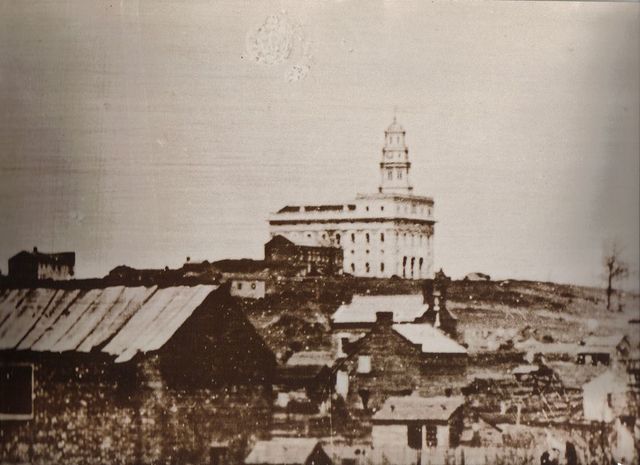 His authoritative control over Nauvoo was not unprecedented. Other states had and would grant similar control over a city or a county to religious and community leaders in places like Harmony, Pennsylvania, under George Rapp, New Harmony, Indiana, under Robert Owen, and the Amana Colonies in Iowa and Ebeneezer, New York. None of these groups faced state-sanctioned paramilitary violence for their authoritarian control over their towns and cities.
His authoritative control over Nauvoo was not unprecedented. Other states had and would grant similar control over a city or a county to religious and community leaders in places like Harmony, Pennsylvania, under George Rapp, New Harmony, Indiana, under Robert Owen, and the Amana Colonies in Iowa and Ebeneezer, New York. None of these groups faced state-sanctioned paramilitary violence for their authoritarian control over their towns and cities.
It Wasn’t His Claim to Prophecy
I can’t even see his claim to being a prophet as the source of people’s anger. Henry Miller, Christian Mertz, Barbara Heinemen Landman, Anne Lee, and Ellen G. White were contemporaries of Joseph Smith who all claimed to be prophets and didn’t face the kind of violent oppression Joseph Smith did. Christian Mertz, Ellen G. White, and Barbara Heinemen Landman produced new scripture too (even if they were more quiet about it.)
Anne Lee claimed to be the female reincarnation of Jesus Christ. She still didn’t face the problems Joseph Smith did.
It Wasn’t The Practice of the Gathering
His practice of bringing poor converts over from Europe can’t be the cause because the Shakers did that without retribution. All of the utopian groups had ideas similar to the gathering and did not face violent retribution for it, at least not at the scale that Joseph and the Latter-day Saints did.
It Wasn’t A Lay Clergy
Criticizing “priestcraft” was a common enough idea in the English speaking world of the 19th century. None of the other groups who were opposed to a paid clergy (Like the Quakers, the Plymouth Brethren, and the Amish) were oppressed for it.
It Wasn’t the Word of Wisdom
It can’t be the word of wisdom because that wasn’t widely practiced among his followers and it was pretty common to other utopian experiments and the evangelical holiness movement.
It Wasn’t His Communalism
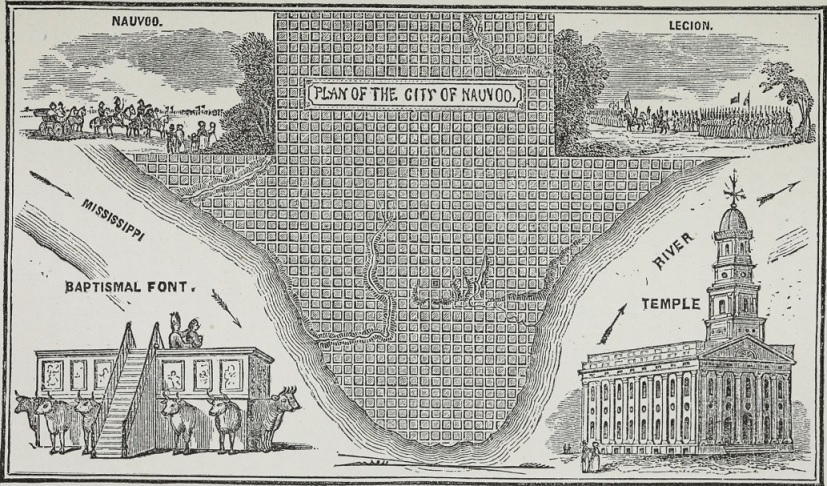 Communalism has been an established American tradition since Woman in the Wilderness was founded in the 17th Century by Johannes Kelpius. Since then, those communities proliferated to a point that they were a common feature of everyday life throughout the Northeast from New England to Iowa. After Joseph Smith’s death, it was a group of Utopians called the Icarians who took over Nauvoo. After his death, Utopianism continued to spread to Colorado, Texas, the Dakotas, Oregon, Washington, California, Utah, Idaho, Nevada, and Arizona.
Communalism has been an established American tradition since Woman in the Wilderness was founded in the 17th Century by Johannes Kelpius. Since then, those communities proliferated to a point that they were a common feature of everyday life throughout the Northeast from New England to Iowa. After Joseph Smith’s death, it was a group of Utopians called the Icarians who took over Nauvoo. After his death, Utopianism continued to spread to Colorado, Texas, the Dakotas, Oregon, Washington, California, Utah, Idaho, Nevada, and Arizona.
Their leaders and members (who included notables like Henry David Thoreau, Ralph Waldo Emerson, and Henry Meeker) never faced violent oppression. Even Nashoba wasn’t violently oppressed. So, that clearly wasn’t the cause.
It Wasn’t His Non-Trinitarianism
Lots of sects from this time period ranging from the Unitarians to the Christian Scientists rejected Trinitarianism. They didn’t face the kind of hatred and violence the Latter-day Saints did.
It Wasn’t His “Treasure Hunting”
It can’t be his practice of being a “treasure hunter” because that was something that anyone associated with the Braucherei tradition of German-Christian folk magic would practice. He was not alone in being a treasure hunter but very alone in the intensity of hatred he received for it.
It Wasn’t the Failure of the Kirtland Safety Society Anti-Banking Company
It can’t be the economic problems he faced in Ohio, because although he may have acted without legal authority to open a bank, the bank he opened did nothing abnormal for the time period. There was no federal currency at the time; backing bank-printed currency with real estate was the standard practice; the bank failed during a wave of similar failures throughout the country. Once again, nothing abnormal there.
During that five-year period, roughly half the country’s banks failed along with Joseph’s. I don’t even need LDS sources to ascertain that if I’m familiar with the history of capitalism in the United States. People were not routinely run out of town because their bank failed, even the ones formed without a legal charter.
It Wasn’t Polygamy
It can’t be his practice of polygamy. Bigamy may have been illegal in the books but bigamy laws were not routinely enforced. Many of the Owenite communities and all of the Perfectionist communities (Oneida) practiced similar doctrines without legal consequence. John Humphrey Noyes and Robert Owen were never jailed for practicing or promoting spiritual wifery or community marriages (polyamorous marriages in all directions across gender lines.)
Jacob Cochrane, who many critics of the LDS Church cite as the source of polygamy, was the leader of a communal religious group that practiced polyamory. Absolutely nothing abnormal for that movement. They conveniently ignore that he didn’t face the violence and oppression the Latter-day Saints did.
It Wasn’t Their Abolitionist Stance
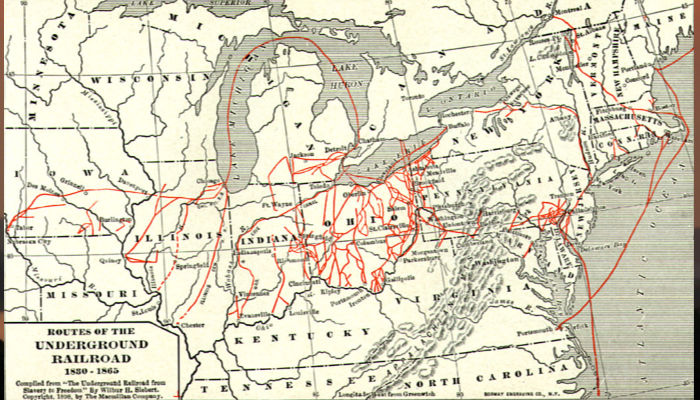
Lots of people were abolitionists and weren’t run out of town or murdered for it. Especially in a free state like Illinois.
It Wasn’t the Nauvoo Militia
I can’t even claim that his military power was a problem, because most towns and counties had their own militia. It was the militia of a neighboring town, the Carthage Grays, who were largely responsible for generating the mob that killed him. They never faced legal consequences for their involvement. It wasn’t considered devious that they existed. Carthage and its citizens were not run out of Nauvoo for having a militia.
It Wasn’t Freemasonry
Many people in the 19th century practiced Freemasonry and weren’t murdered for it. Some of them even went on to found other organizations that used the Freemasons’ initiatory ceremonies with people they shouldn’t have been shared with (the uninitiated, women and children.)
Groups Affiliated with Freemasons – Dummies
The most notable of these would be The Grange which was founded as an agricultural extension service to unite Northern and Southern farmers after the civil war. The Grange is a national organization that had extensive participation rates in all of the lower 48 states.
The “blood oaths and penalties” of the Masonic initiatory ceremonies were a symbolic representation of the dangers of sharing Masonic secrets. The Freemasons and most groups belonging to the western esoteric movement (and most secret societies worldwide) were formed because the information and ideas they shared with each other could get them killed by the powers that be.
These penalties were a symbolic reminder in a symbolic initiatory ceremony, in a symbolic movement that can trace its cultural lineage and use of symbols to long before the birth of Christ. They were meant to remind people through symbols that sharing the secrets of the lodge could get you and the lodge members killed by outsiders and the powers that be. Not the lodge members themselves.
They were not systematically applied to people who broke the Freemason oath of secrecy. They were not applied to Joseph Smith.
Additionally, it’s difficult to tease out how much of the temple ceremonies Joseph Smith got from the Freemasons and how much of it he got from the Rosicrucians at the Ephrata Cloister and Snow Hill. Their ceremonies are very similar and the LDS temple ceremony of the 19th century had elements of both.
The Rosicrucians don’t even take a blood oath so they couldn’t have killed him for sharing their ceremonies either.
Your Guess is as Good as Mine
The honest truth is that any group of people that size had multiple and varying motives for hating Joseph Smith and the Latter-day Saints. Why did they hate them? Your guess is as good as mine because they let a lot of similar behavior in other groups slide by without punishment or harassment.
My best guess would be that Latter-day Saints crossed enough of these lines to trip the tolerance threshold of their neighbors. It wasn’t that they were weird, it’s that they were too weird. That triggered animosity in a high enough proportion of the population that it cost them their safety. Because no one was willing to stand up for them. Everyone agreed that there was something to hate about the Latter-day Saints and Joseph Smith even if they didn’t agree on what that something was.
The problem with this theory is that many of the groups we’ve just discussed practiced most of these ideas and practices as well. There were plenty of free-loving, non-trinitarian, secret initiation ritual practicing, heretical humanitarian communalists in that part of the world and that period of time. They were not run out of town and murdered for their beliefs and practices, at least not on the kind of scale the Latter-day Saints were.
Alternatively, the Latter-day Saints look at this mess and conclude that the only real explanation is that Satan wanted Joseph Smith and his religion to fail, so he planted it into people’s hearts to hate them, and stirred people up against them.
That’s not something we can test or ascertain scientifically. But in this mess, their guess, and yours, is as good as mine.
The important thing is to remember that when people attempt to ascertain motives in people, especially dead people, they are just making educated guesses.
Look forward to more articles from Manu Padro that give context to the world in which the restoration of the gospel took place.


